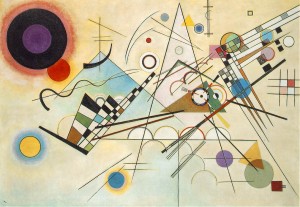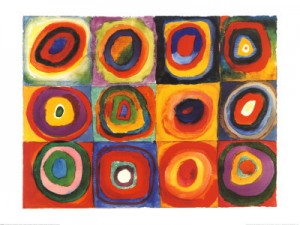Influence
For a long time, art was only done realistically. Artists would paint subjects and landscapes exactly how they existed in real life. Kandinsky saw things differently. “He experienced objects, events, even music primarily in terms of color, and he did not conceive of color in its physical and material aspects but rather in its emotional effect” (Selz, 1957). His experiences with objective art led him to create what we now call abstract art. He wanted to feel free and unrestricted when painting, and he found that he felt that way when creating abstract art (Selz, 1957). While there may have been artists before Kandinsky to create abstract art, Kandinsky was the one who made it popular (Selz, 1957). He is known as a respected leader of the abstract art movement (Wassily Kandinsky, 2014).
Famous Works
Improvisation 19 was among Kandinsky’s Improvisation collection. This collection was very popular. Improvisation 19 was painted in 1910 (Pioch, 2002).

Improvisation 19
by Melinda Taber, used under CC BY-NC-SA
Composition VIII is another famous painting of Kandinsky’s. He created it in 1923. It is currently on display at the Guggenheim Museum in New York City (Pioch, 2002). Kandinsky’s Composition collection is also very well known.

Composition VIII
by William Cromar, used under CC BY-NC-SA
The piece is one of Kandinsky’s most famous paintings. It is known as Squares with Concentric Circles. It was painted in 1913.

Squares with Concentric Circles
by Rie, used under CC BY-NC-ND
References:
Pioch, N. (2002). Kandinsky, Wassily. WebMuseum: Paris. Retrieved April 14, 2014, from http://www.ibiblio.org/wm/paint/auth/kandinsky/
Selz, P. (1957). The Aesthetic Theories of Wassily Kandinsky and Their Relationship to the Origin of Non-Objective Painting. The Art Bulletin, 39, 127-136.